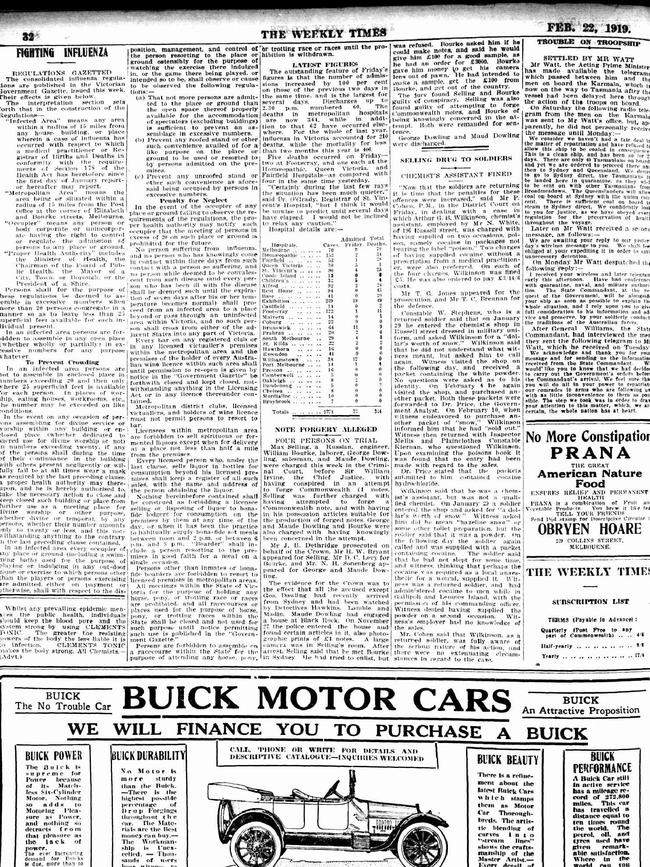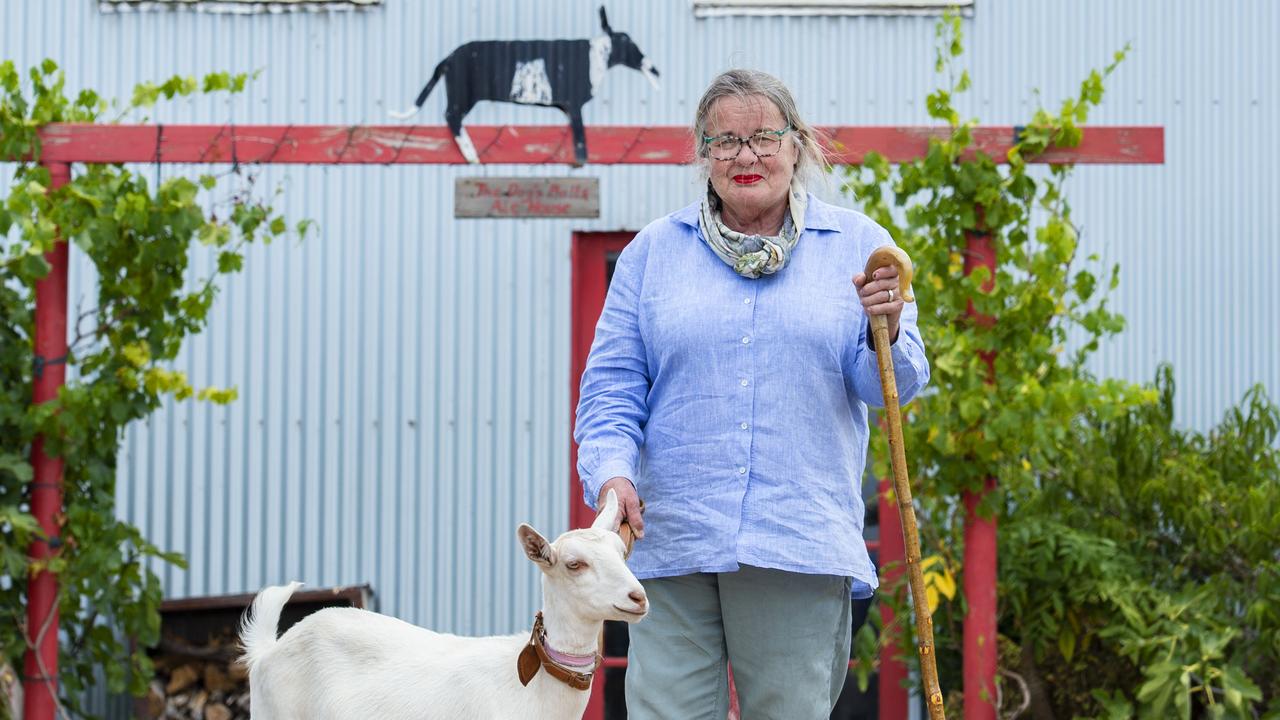The Weekly Times looks back at response to Spanish influenza in 1919
Coronavirus is causing interruptions to our society that are beyond anything most of us have experienced. But look back at 1919, and there are some similarities.
COVID-19 has caused interruptions to our society that, for most of us, are beyond anything that we have experienced in our lifetimes.
But they are not unprecedented.
World wars, stockmarket crashes and previous pandemics have all caused major changes to the way our society operated — some of those changes became permanent, but others eventually reverted back to business-as-usual.
One of the most common comparisons being made right now is between coronavirus, or COVID-19, and the Spanish flu pandemic, which kicked off just over a century ago.
While there are many differences between the two diseases, the responses from the governments of the day do show some similarities.
The Weekly Times devoted much coverage to the influenza outbreak 100 years ago.
This page, from February 1919, notes rules around restrictions on gatherings: “In an infected area persons are not to assemble in enclosed place in numbers exceeding 20 and then only where 25 superficial feet is available for each person. In places of worship, eating houses, workrooms, etc., the number may be exceeded on like conditions”.
The page also included the latest figures of cases of the disease and the number of deaths.

And just like now, the effect of the pandemic, and the restrictions it required to be put in place, had a severe impact on the workforce.
Just a week after the “fighting influenza” page was published, an article appeared in The Weekly Times on March 1, commenting on the effect restrictions were having on the working classes, and slamming the government for not taking action to lessen the burden.
“The Government has a right to demand sacrifice from all when the country requires it; but it must see that the distribution of burdens is fair and equal; it must not penalise one
class and let other classes escape almost scot-free.”
While acknowledging the restrictions were for the community’s wellbeing, and not imposed “wantonly or recklessly”, “the fact remains that they have weighed very hardly on many
wage-earners”.
“With the object of protecting the health of the community, the work of certain classes has been summarily stopped. No provision for maintaining these unfortunate employees has been suggested by the Government.
“If the State has the right — and unquestionably it has — to deprive them or their means of livelihood because it believes that the continuance of the various enterprises which supply them with the wherewithal to live is fraught with danger to the public, the least it can do is to see that they suffer no loss disproportionate to that inflicted upon the rest of the community.”

In April, the author of a letter published on the “Young Folks” page noted that by the end of the January prior: “Victoria was quarantined and nobody was allowed to come into Victoria or go out, which caused much inconvenience for the time. People were very much scared at the outbreak at first, but later on they got used to it”.
People assisted with looking after the sick, but the author, from Curyo in the Victorian Mallee, wrote “many kind nurses and doctors lost their lives through nursing others”.
Precautions such as wearing masks, stopping the races and closing hotels, picture shows and theatres had been taken.
“Curyo has been very lucky in escaping it. The nearest case was 15 miles away.”
Now in the 21st century, as the world grapples with coronavirus, there are new challenges and also methods of dealing with a pandemic. But, it seems, some methods have stood the test of time.


